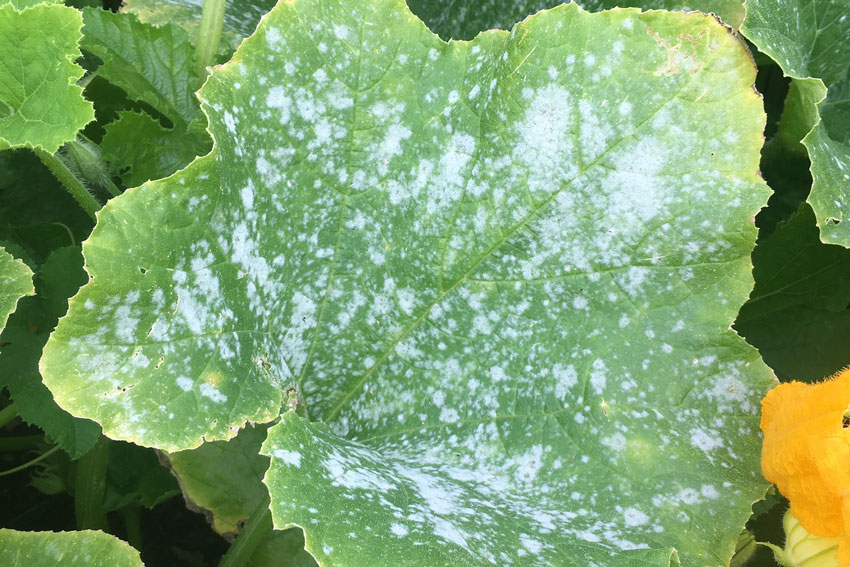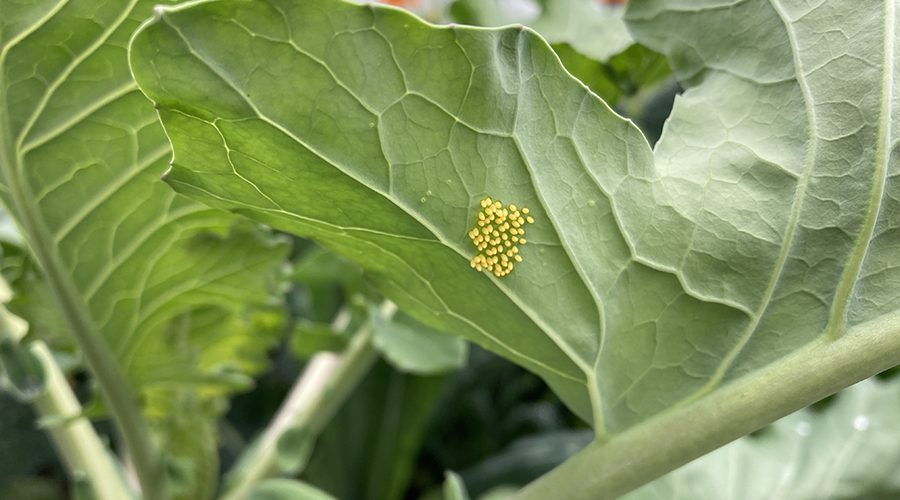At the height of the summer (even if it feels like autumn) there is a steady stream of pests and diseases to contend with. This article looks at some that you may well encounter over the next month.

Slugs & Snails
With more frequent rain, you may find slugs and snails becoming a lot more active. Mature plants are usually a little more able to withstand damage, but any new plants that are going in the ground will need to be protected. Barriers around the base of plants made from grit or wool pellets work well. Beer traps are a good deterrent. For plants in pots, copper tape around the pot is a good idea.
Other suggestions from us would be to pick up fallen, dying leaves regularly – yellow brassica leaves are very attractive to slugs – and to keep your plot as tidy as possible by removing watering cans, bags of compost and any pots that may be lying around.

Caterpillars
Cabbage White Butterflies are still laying eggs. As soon as they hatch, the caterpillars start feeding on plants – they tend to be on brassicas so kale, cabbage, cauliflowers, broccoli, turnips, and swede plants are all good fodder.
Check for eggs and caterpillars regularly – look on the underside of leaves for clusters of white/yellow/green eggs, and for single eggs as well as new hatchings. If you can catch them at egg stage and wipe the eggs off, or rip a part of the leaf off and move to a patch of nasturtiums that you don’t mind sacrificing, then this is the best bet.

Voles, Mice & Rats
These furry pests can do some unseen damage – voles will tunnel underground and eat through root veg crops. They particularly like beetroot for its sweetness, and annoyingly the damage is not seen until you harvest the crops. Have a look around your plot for the tell tale signs of small holes in the soil, and loose ridges of soil at the surface where voles may have tunnelled.
Mice and Rats are more likely to do visible damage – you may see teeth marks in courgettes or unripe winter squashes. Again, there will be holes in the earth – rat holes can be quite big, like tennis ball size.
Controlling rodents is a little tricky – we would always suggest choosing non-killing traps if you want to try and catch them and release them elsewhere. It’s also worth turning compost piles to try and disturb them so that they move to another part of the garden etc. Try to keep the plot free from enticing food sources – if you have bird food or any harvested crops, for example, then it’s probably worth storing in metal buckets or moving them from out of the garden shed so that they’re not encouraging rodents.

Blight
Brown/black patches on the leaves of potatoes and/or tomatoes at this time of year is usually a sign of blight. The patches will grow, and you’ll begin to see patches on the stems as well. Eventually the tomatoes and potatoes themselves will be affected.
If you see signs of blight, it is wise to prune hard any affected foliage to try and slow the spread. Once it takes hold of the plant, you will need to harvest the tomatoes you can to ripen them indoors before the fruits are infected, or cut potato foliage right down to ground level and begin harvesting the tubers.

Mildew
Both powdery mildew and downy mildew become more common in the warm but damp conditions of late summer. Cucurbits, like squash, cucumber and courgettes, are often affected, along with mature pea plants.
It is part and parcel of growing these plants, and older leaves will be affected first. The fruits themselves are rarely impacted, so you can simply cut off older affected leaves. You may well find that new leaves are coming through nice and healthily for several weeks anyway.

Aphids
Colonies of aphids – blackfly, greenfly, whitefly etc – become common at this time of year. They can cause quite a lot of damage to veg plants, and they are not hugely fussy about which they make their home. Check plants and if you see a colony building (they often go for the nooks between stem and leaf) a good approach is to hose them off with a strong jet of water once or twice a day until the plant is cleared.
You can also put something yellow and sticky, like a yellow bucket smeared with vaseline, to lure them onto that instead.

Root Fly
Both Cabbage Root Fly and Carrot Root Fly can cause damage as the eggs laid in and around the veggies hatch and the larvae bury into the roots to feed.
For carrots, the damage is seen at harvesting, with brown rotting holes and tunnels in the carrots themselves. For cabbages and other brassicas, the damage is seen when the plants begin to wilt as they no longer have the root system to sustain their growth.
Unfortunately, once the larvae have hatched, there is nothing to be done to prevent damage. The best thing for root fly is always prevention – use it as a learning curve and next season use mesh netting to cover the crops when planting.

